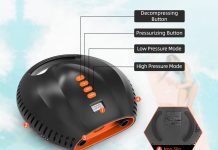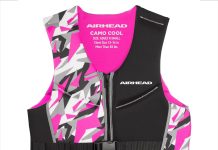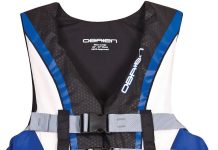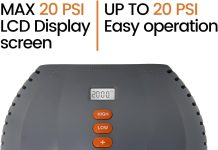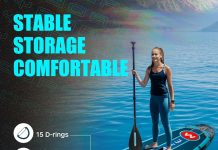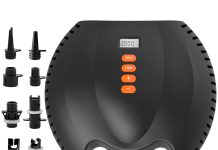When it comes to choosing the perfect material for SUP paddles, the options can be overwhelming. Among the most popular choices are fiberglass, carbon fiber, and plastic. Each material offers its own unique benefits and drawbacks that can greatly impact your paddling experience. In this article, we will explore the qualities of each material, allowing you to make an informed decision and find the paddle that best suits your needs. Whether you’re a beginner or a seasoned paddler, understanding the differences between these materials is essential in maximizing your performance on the water.
Durability
Fiberglass
Fiberglass SUP paddles are known for their durability. The material is strong and can withstand regular use in various water conditions. It is resistant to cracking, chipping, and warping, making it a reliable choice for those who want a long-lasting paddle. Fiberglass paddles can also handle accidental drops and impacts without compromising their structural integrity.
Carbon Fiber
Carbon fiber SUP paddles are renowned for their durability. This material is incredibly strong, making it ideal for paddleboarding enthusiasts who want a paddle that will last for years. Carbon fiber paddles have a high strength-to-weight ratio, meaning they provide excellent durability without adding unnecessary weight. They are also resistant to impact and can withstand the rigors of daily use.
Plastic
Plastic SUP paddles offer decent durability, especially for beginner paddlers who are likely to be more prone to accidental drops and impacts. While plastic may not be as durable as fiberglass or carbon fiber, it can still withstand regular use and occasional bumps without breaking. Plastic paddles are often a more budget-friendly option for those who are just starting with paddleboarding and don’t want to invest in a more expensive paddle right away.
Weight
Fiberglass
Fiberglass SUP paddles are known for their lightweight nature. The material itself is relatively light, making it easy to maneuver in the water. This lightweight characteristic allows paddleboarders to paddle effortlessly, reducing fatigue during longer sessions. Fiberglass paddles are a popular choice for those looking for a lightweight paddle that won’t strain their arms and shoulders.
Carbon Fiber
Carbon fiber SUP paddles are incredibly lightweight, making them a top choice for performance-oriented paddlers. The material’s exceptional strength-to-weight ratio allows for a lightweight paddle without sacrificing durability. Carbon fiber paddles are often preferred by professional and experienced paddlers who value speed, agility, and efficiency on the water.
Plastic
Plastic SUP paddles tend to be heavier compared to fiberglass and carbon fiber options. While the weight difference may not be significant for beginner paddlers or those who prioritize budget over performance, it can become noticeable during longer and more intense paddling sessions. The added weight might lead to arm and shoulder fatigue, potentially affecting the overall paddling experience.
Flexibility
Fiberglass
Fiberglass SUP paddles offer a good balance of flexibility and stiffness. This characteristic allows for efficient energy transfer from the paddler to the water, resulting in a smoother stroke and increased propulsion. The flexibility of fiberglass paddles helps reduce strain on the wrists and shoulders, making them a comfortable choice for paddlers of various skill levels.
Carbon Fiber
Carbon fiber SUP paddles are known for their stiffness. While they may lack the flexibility of fiberglass paddles, this stiffness translates into better energy transfer and increased paddle efficiency. Professional and experienced paddlers often prefer stiffer paddles as they provide a more controlled and powerful stroke. However, the lack of flexibility might not suit everyone’s paddling style and physical capabilities.
Plastic
Plastic SUP paddles generally offer less flexibility compared to fiberglass and carbon fiber options. The material’s rigidity might result in a stiffer stroke, which can be more strenuous on the body. However, some paddlers may prefer the stability and control that a stiffer paddle provides, especially beginners who are still developing their paddle technique.
Performance
Fiberglass
Fiberglass SUP paddles offer solid performance on the water. They provide a good balance of weight, durability, and flexibility, making them suitable for a wide range of paddlers. The material’s properties allow for efficient energy transfer, resulting in smoother strokes and improved maneuverability. Fiberglass paddles are particularly well-suited for recreational paddling and casual use.
Carbon Fiber
Carbon fiber SUP paddles excel in terms of performance. Their exceptional combination of lightweight design, durability, and stiffness allows for an efficient and powerful paddle stroke. Carbon fiber paddles are highly favored by professional and competitive paddlers who seek maximum performance and speed. They offer excellent responsiveness and increased maneuverability, making them ideal for racing or performance-oriented paddleboarding.
Plastic
Plastic SUP paddles may not match the performance capabilities of fiberglass or carbon fiber paddles. They generally offer decent performance for recreational paddling, but their weight and limited flexibility can affect their responsiveness and overall efficiency. Plastic paddles are suitable for beginner paddlers or those who prioritize affordability over high performance.
Price
Fiberglass
Fiberglass SUP paddles are available at a moderate price range. They offer a good balance of performance and durability without breaking the bank. Fiberglass paddles are a popular choice for budget-conscious paddlers who still want a reliable and quality paddle.
Carbon Fiber
Carbon fiber SUP paddles tend to be more expensive compared to fiberglass and plastic options. The advanced manufacturing processes and premium materials used in carbon fiber paddles contribute to their higher price tag. However, professional paddlers or those who prioritize performance and lightweight design are often willing to invest in a carbon fiber paddle for its unparalleled performance benefits.
Plastic
Plastic SUP paddles are generally the most budget-friendly option. They are widely available at a lower price range, making them a popular choice for beginners or recreational paddlers who are not yet ready to commit to a higher-priced paddle. Plastic paddles provide a cost-effective entry point into the world of paddleboarding without sacrificing basic functionality.
Maintenance
Fiberglass
Fiberglass SUP paddles require minimal maintenance. They are relatively easy to clean and maintain their appearance with regular rinsing and wiping. In case of any scratches or minor damage, fiberglass can be easily repaired with basic DIY kits. However, it is essential to avoid exposing fiberglass paddles to extreme temperature changes or prolonged exposure to direct sunlight, as these factors can degrade the material over time.
Carbon Fiber
Carbon fiber SUP paddles also require minimal maintenance. Like fiberglass, they can be cleaned with a simple rinse and wipe. Carbon fiber paddles are highly resistant to corrosion and degradation, ensuring their longevity with proper care. However, it is important to inspect the paddle for any signs of damage or wear and tear, as any structural compromises can affect its performance and durability.
Plastic
Plastic SUP paddles are generally low maintenance. They can be easily cleaned with water and mild soap to remove any dirt or debris. However, plastic paddles are more prone to visible wear and tear, such as scratches and scuffs. While these cosmetic damages do not affect the paddle’s functionality, they can impact its overall aesthetics and longevity.
Resistance to Impact
Fiberglass
Fiberglass SUP paddles offer good resistance to impact. The material is known for its strength and ability to withstand accidental drops or sudden impacts with rocks or other obstacles in the water. However, it is important to note that severe impacts can still cause damage or compromise the structural integrity of a fiberglass paddle, so caution should always be exercised to prevent excessive force or abuse.
Carbon Fiber
Carbon fiber SUP paddles provide excellent resistance to impact. This material is exceptionally strong and can withstand significant force without breaking or cracking. Carbon fiber paddles are designed to be durable and resistant to impact, allowing paddlers to confidently navigate through various water conditions and encounter occasional bumps or collisions without worrying about their paddle’s integrity.
Plastic
Plastic SUP paddles offer reasonable resistance to impact. While they may not be as durable as fiberglass or carbon fiber, they can generally sustain minor bumps and impacts without breaking or sustaining significant damage. However, it is important to handle plastic paddles with care to prevent any excessive force or rough handling that could potentially result in cracks or breakages.
Vibration Damping
Fiberglass
Fiberglass SUP paddles provide decent vibration damping properties. The material absorbs some of the vibrations caused by water displacement, resulting in a smoother and more comfortable paddling experience. While it may not completely eliminate all vibrations, fiberglass paddles offer a good balance between comfort and responsiveness.
Carbon Fiber
Carbon fiber SUP paddles excel in vibration damping. The material’s inherent stiffness helps effectively reduce vibrations, resulting in a comfortable and stable paddling experience. Carbon fiber paddles absorb a significant amount of vibrations, allowing paddlers to maintain better control and reduce fatigue, particularly during longer paddling sessions.
Plastic
Plastic SUP paddles offer limited vibration damping capabilities compared to fiberglass and carbon fiber. The material tends to transmit more vibrations, which can result in a less comfortable paddling experience. However, for beginners or casual paddlers who prioritize affordability over advanced performance features, the slight increase in vibrations may not be a significant concern.
Aesthetics
Fiberglass
Fiberglass SUP paddles are available in a wide range of designs and colors. The material can be easily molded, allowing for various shapes and styles to suit individual preferences. Whether you prefer a sleek and minimalist design or a vibrant and eye-catching paddle, fiberglass offers plenty of aesthetic options to choose from.
Carbon Fiber
Carbon fiber SUP paddles often showcase a sleek and modern aesthetics. The black, glossy appearance of carbon fiber gives paddles an elegant and professional look. While carbon fiber paddles may not offer as much design variety as fiberglass or plastic, their minimalist and sophisticated aesthetics are highly appealing to many paddlers.
Plastic
Plastic SUP paddles typically have a more basic and utilitarian appearance. They are often available in solid colors without intricate design elements. However, for paddlers who prioritize functionality over aesthetics, the simplicity of plastic paddles might be a preferred choice.
Environmental Impact
Fiberglass
Fiberglass SUP paddles have a moderate environmental impact. While the material itself is not considered sustainable, it can be recycled and repurposed, reducing waste. However, it is important to note that the manufacturing processes of fiberglass can generate emissions and waste, contributing to the overall carbon footprint.
Carbon Fiber
Carbon fiber SUP paddles have a higher environmental impact compared to fiberglass and plastic. The production of carbon fiber involves energy-intensive processes and the use of non-renewable resources. However, many manufacturers are working towards more sustainable practices, such as using recycled carbon fiber or exploring alternative materials, to minimize the environmental impact of carbon fiber paddles.
Plastic
Plastic SUP paddles also have a significant environmental impact. Plastic is derived from fossil fuels and is not biodegradable. Improper disposal of plastic paddles can lead to pollution and harm the environment. However, some manufacturers are beginning to explore more sustainable alternatives, such as using recycled or bio-based plastics, to mitigate the environmental impact of plastic paddles.
Overall, the choice of SUP paddle material depends on personal preferences, budget, performance requirements, and environmental considerations. Fiberglass paddles offer a good balance of durability, weight, flexibility, and price, making them a suitable choice for a wide range of paddlers. Carbon fiber paddles excel in terms of performance and lightweight design, making them ideal for professional and performance-oriented paddling. Plastic paddles are the most budget-friendly option and offer decent durability, but may lack some of the performance benefits of fiberglass and carbon fiber. Consider your needs and priorities to choose the SUP paddle material that best suits your paddleboarding style and preferences.


